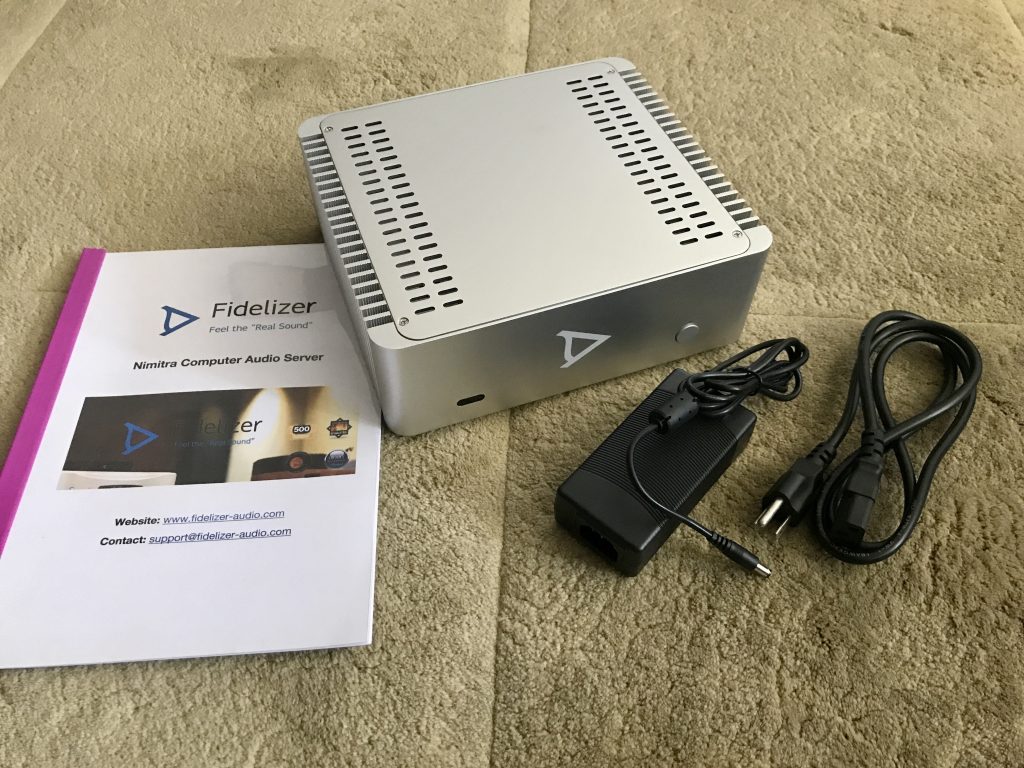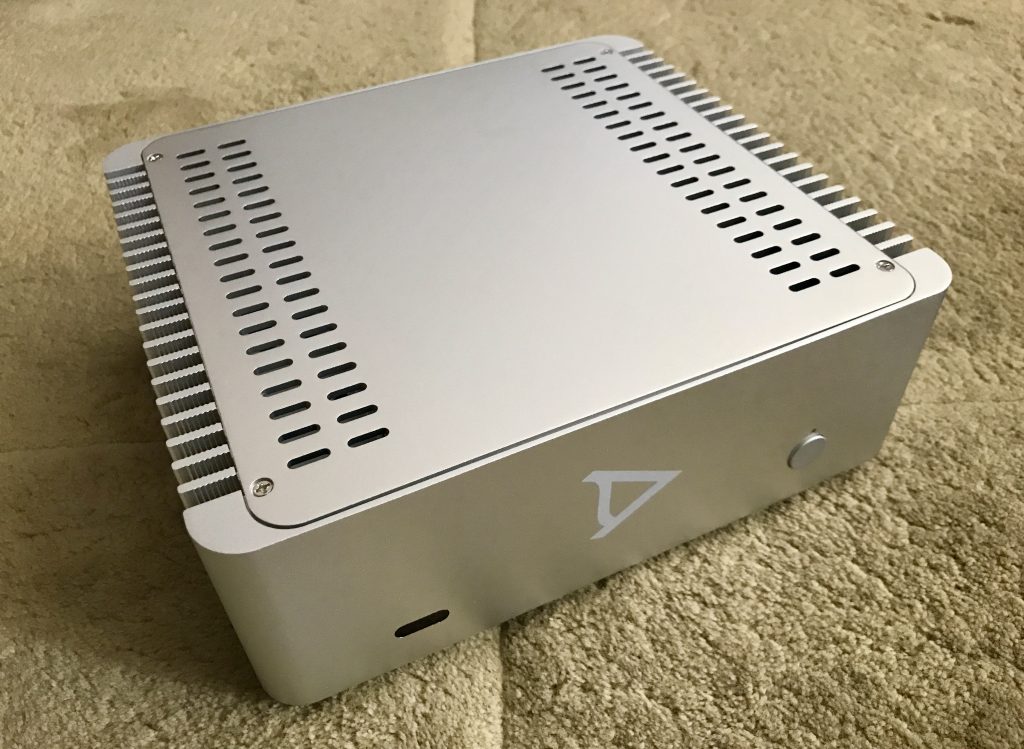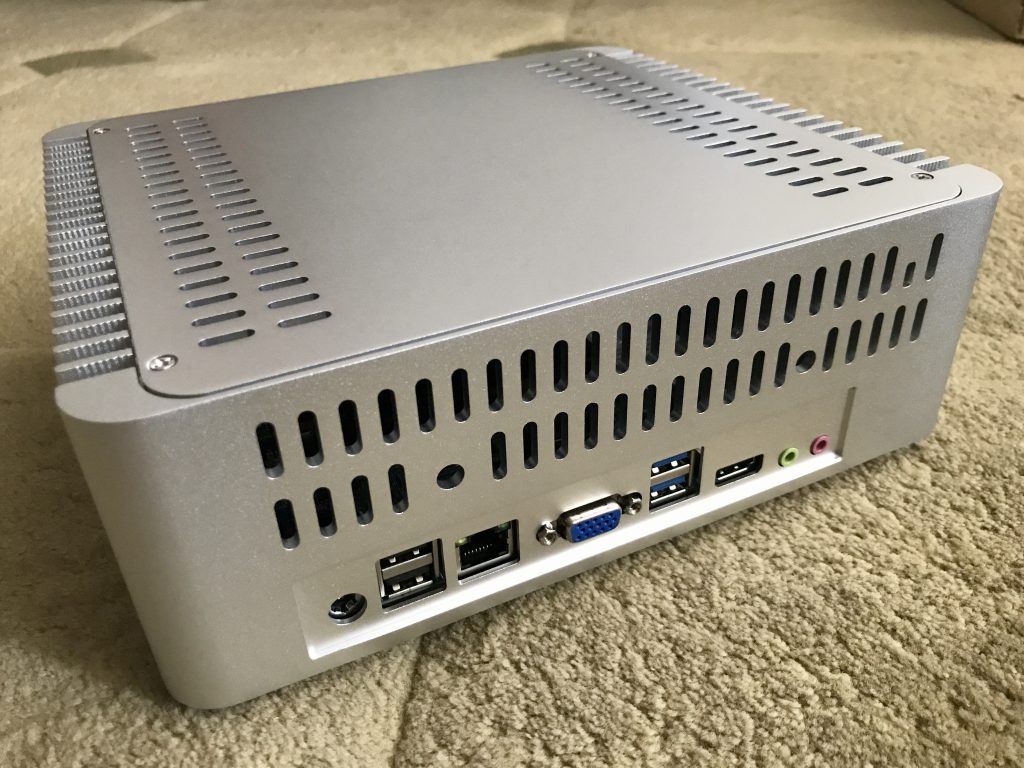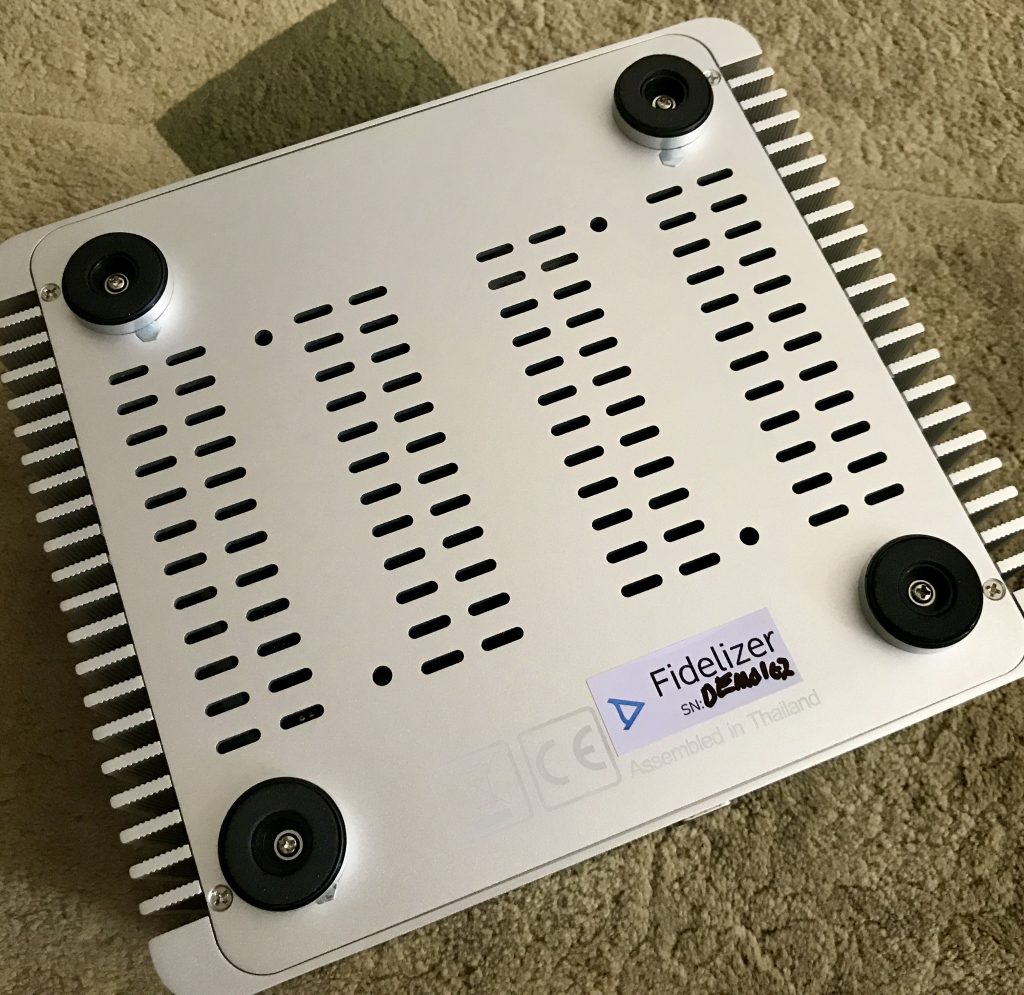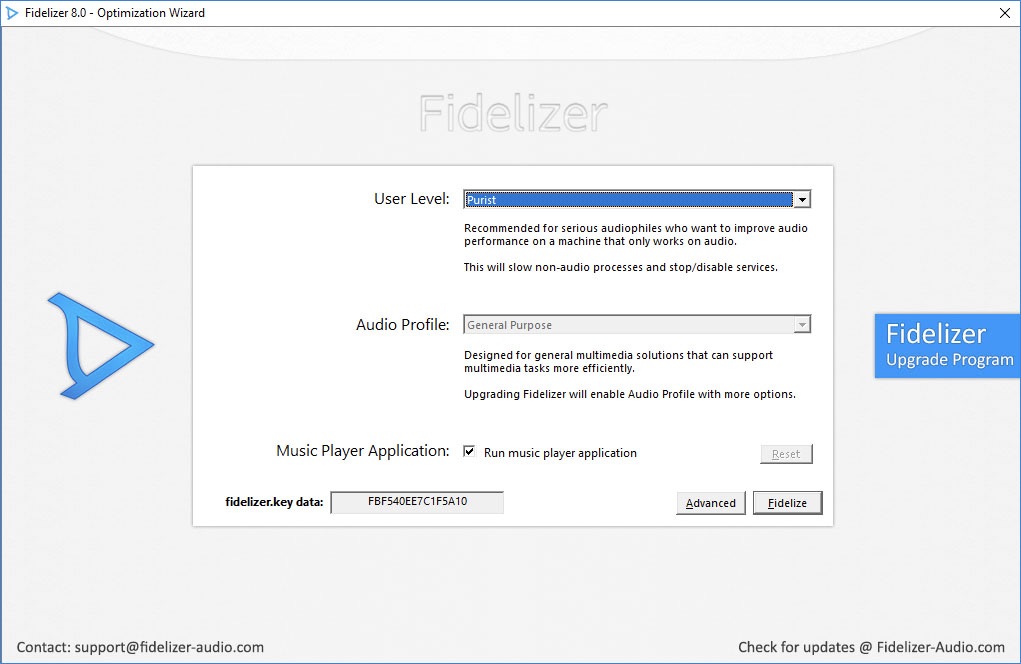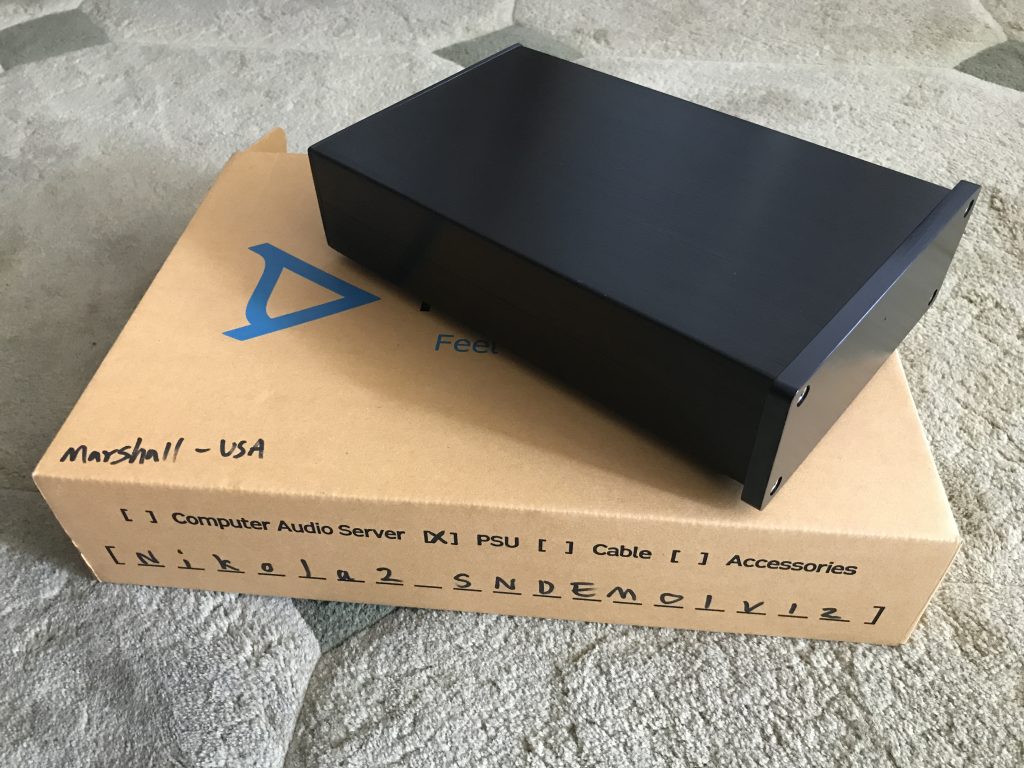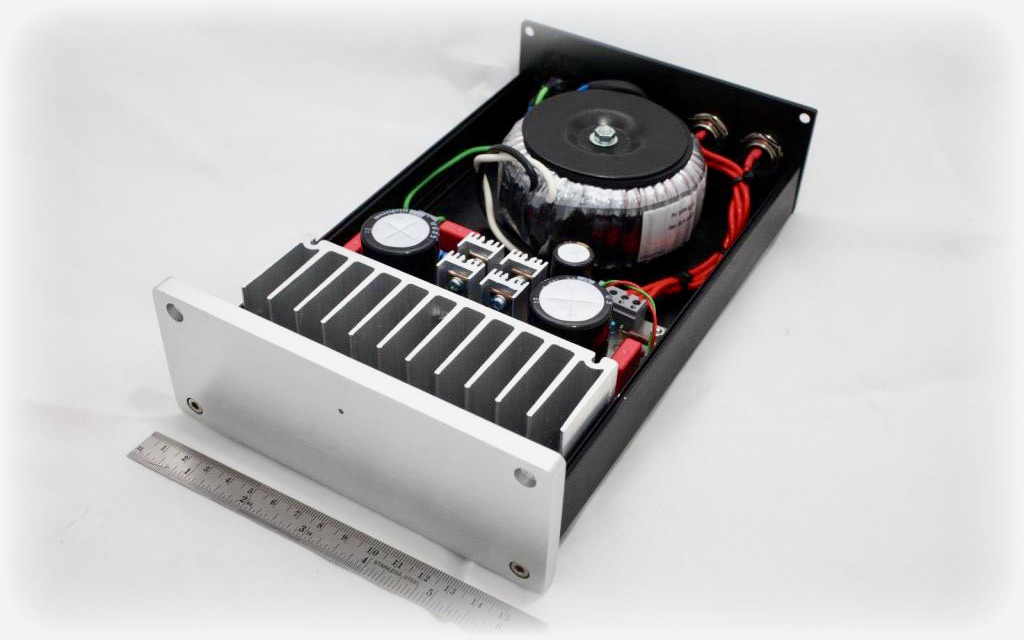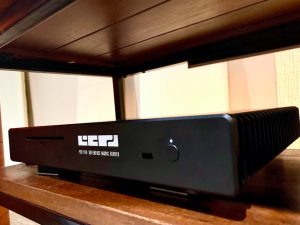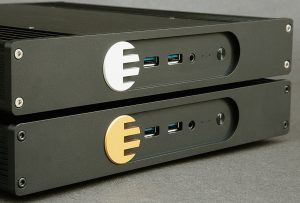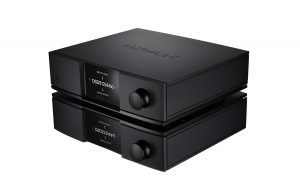When something is not as advertised, I have no problem calling it out. So it was when music streaming came along. I read reviews, heard the demos, and my ears told me it was a step backwards, plus it was always crashing. I stayed on the sidelines until about four years ago when my DAC manufacturer announced an Ethernet Streaming HD Board enhancement and offered it for review. This was the opportunity to jump in and I casually threw together a modest ethernet streaming front-end. Well, that was a mistake. Since when is the word "casual" in any sense applicable to the audiophile?
Without applying due diligence, the result was mediocre. Streaming is no different from any other front-end, where every piece in the chain makes a difference, including those you intuit can't possibly matter. I went back to the drawing board with focused attention and started over. The server is the last item on the block.
I've been using a MacBook Pro laptop since 2019. At the time, the Mac operating system was widely regarded as the best of the general purpose home computers for this application. Maybe it still is, but dedicated servers have sprinted forward since then. So I began a conversation with Fidelizer, an audiophile boutique based in Thailand noted for delivering late-breaking hi-tech products priced for the average consumer, about their Nimitra2 music server/streamer (MSRP $2495). The MacBook Pro and the Nimitra2 may cost around the same, but I suspected a face-off wouldn't be close. This was confirmed a mere two hours after the Nimitra2 was on the job. Nevertheless, the Mac is my reference, so I'll use it for comparisons.
the Fidelizer Optimized Solution
With assistance from Mr. Keetakawee Punpeng, the Fidelizer guy, we assembled a suite of devices I'll call the Fidelizer Optimized Solution. The heart of it is the Nimitra2 Server, supported by their EtherStream Network Switch, the Nikola2 linear power supply (in my case with dual outputs to power the server and switch) and Fidelizer DC power cables. AudioQuest Diamond ethernet cables ($1599.95/1.5m) and a Dragon power cord ($9900/2m) provided connectivity.
Mr. Punpeng claims the Nimtra2 is not partial to USB or ethernet, however, my installation is partial to ethernet. My DAC manufacturer (CH Precision) has focused on steadily improving that pathway and for that reason I'll use it exclusively.

The Sound of Jazz
I activated Roon radio to do track selection from Qobuz and the first thing that caught my ear was a tune from the Cyrus Chestnut Piano Trio I hadn't heard before: Eyes of an Angel, from the album Journeys (Jazz Legacy Productions, FLAC 44.1kHz 16-bit). Mr. Chestnut (or Nut Man, as he's fondly known) is a favorite of mine, a song interpreter who can be counted on to dish up heaping's of soul. When he tinkles the ivories its' respectful of the tune, never just to show off flashy chord changes or explore technique for its own sake. To that extent, some have labeled him an anachronism. Yes, sure—but, in the best sense. I've been a fan for years, so call me old-fashioned, too. His playing on this album is okay—some of his earlier recordings I find more interesting—while the sound is quite good.
With the Nimitra2 Server in line, the presentation moved forward as you would expect from a component upgrade, while throwing in a couple of twists. For example, the Nimitra2 unleashes strong transients supported by a hefty low-end. Clearly, this machine produces healthy bass, the kind that can propel forward into the room. It rolls out fleshy, though not fat, with enough control to keep it articulate. On the other hand, it is not overly tight (none of the frequency bands are tight). The heavy bass provides a nice underpinning for the other instruments, giving them a foundation to build on. The surprise happens following the transient, with the notably smooth sustain and decay. High frequencies are extended, non-irritating, and a tad sweet. I've come to associate this kind of low-end and treble quality with higher price tags. Altogether, this is a winning formula in my book, one that's sure to please most audiophiles.
While honing in on Neal Smith's drum work, it popped into my head it was really easy to read this soundstage. Mr. Smith mostly keeps his kit well under the other instruments, so it doesn't intrude on the listener's attention, and it was laid out from left to right along the horizontal axis, evidently multi-mic'd and then spread out in post-production mixing. The Nimitra2 grants each wooden stick, brush, cymbal, or drum a unique sonic signature, and so the easy identification of the active percussion pieces. The piano's keyboard was similarly spread along the horizontal axis, with the low and high notes at either side (more evidence of close miking and damping). The recording did not capture any hall resonances that would have blended the sound. Nevertheless, it is warm, the tone is full, and timbres are pleasingly complex. The piano is a presence in the room.
Believe me, I didn't hear anything like this when the Mac was in-stream. I was always aware of deficits in tone, timbre, texture, and dynamics. To put things in perspective, if we were to use my much more expensive CH Precision transport as the reference, I'd say the Mac with Fidelizer ancillaries reproduced about 60% of what's to be had, forcing me to assign it to the low-end class of gear. The Fidelizer Optimized Solution with Nimitra2 server filled out the big picture to raise the percentage to around 85%, and streaming vaulted into issue-free mid-fi. Now I could sit back and be comfortably entertained as Cyrus Chestnut tinkled the ivories.

The Sound of the Symphony
I switched genres and Qobuz introduced me to an attractive Oboe Concerto by Peteris Vasks (Ondine OD 1355, FLAC 96kHz 24-bit), featuring soloist Albrecht Mayer. As with Chestnut's piano trio, the main ingredients of the sound—tone, timbre, and especially dynamics—are in place. I admired the smooth, silky tone of the strings and the oboe's full, almost lush sound. That's a point I haven't emphasized enough. For me, the most attractive aspect of these Fidelizer products is their natural voice and musicality.
Are you curious about the sort of things you get at the next level up, say from the CH Precision D1 transport? When you reach mid-fi, the ingredients for enjoyable sound are in place. Moving up is a matter of applying the finishing touches by adding refinements in resolution, texture, timbral complexity, dimensionality, and precision in soundstaging. These may be small in the overall scheme of things, but they are oh-so necessary to close the gap with the real-world referent.
Cosmetics and Construction
The Fidelizer boxes are built to a price point and have a utilitarian look. You won't find some of the niceties common to costlier components. For example, pressing the On/Off button on the Nimitra2 yields a clink, not the smooth action of more expensive mechanisms. The website claims the chassis has resonance treatment, but a light tap on the top or sides produces a hollow ping. There is a hint of style provided by the heat sink fins and beveled corners on the sides. An adhesive label on the bottom identifies the manufacturer and serial number. I was advised burn-in is 200 hours.
While the Nimitra2 chassis is bigger than the Nikola2, they weigh about the same (1.8 kg) and neither is large. All three Fidelizer boxes fit on one shelf and get barely warm to the touch. I began tweaking with the obvious—the chassis. The top plate is eminently suitable for resonance and vibration tuning, and a Walker Audio Resonance Control Disc on top worked well (as it does for the Nikola2 and EtherStream). The built-in support feet are high quality 3M isolating feet and a 3M absorption sheet is also used on the PCB. By all means, don't skimp on cables. Give the Nikola and EtherStream the best ethernet cables and power cord you can afford.
Internal Storage Option
When asked about internal storage for music files, Mr. Punpeng informed:
The Nimitra2 has internal storage for applications and OS only, due to limitation of 24GB SLC SSD, which is the best technology that can fit in. Customers can request 2.5GB of internal SSD added, or install it themselves, if they want additional storage space. They can also use external USB storage.
For those interested, Mr. Punpeng has a webpage describing the "NimitraOS," his optimized Windows 10 Platform.
Configuration and Optimizations
About midway into the audition, Mr. Punpeng emailed he could optimize my installation using a new feature of the Nimitra2's operating system called the Updater, an online panel with two options. The first, Device Profile, is set to "Network Player" as delivered. Since I'm not using a local network or locally stored music files—I only stream Qobuz from the internet—switching it to the "Streamer" audio profile would be more efficient. This did make an improvement.
The second option, Sound Signature Profile, has two modes:
Sound Signature Profile is a unique new configuration added in the Nimitra OS sound quality optimizations platform. Some clients prefer to have analogue sound reproduction, but there's also those who prefer high resolution with finer details.
The Real Sound Signature was active for what I've been describing above. I found it very musically attractive, but a little soft. Switching to Audiophile Sound Signature firmed up the stage, imparted more definition, and got rid of the softness, only now I was missing the bloom and tonal density. This is a matter of personal taste.
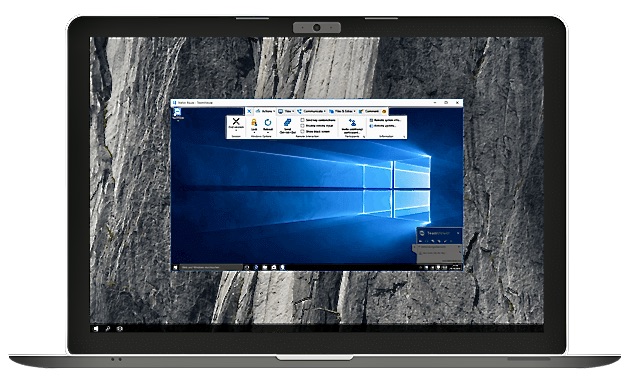
While it's possible for the customer to remotely access the Updater panel, Mr. Punpeng recommends it's best to contact him if you wish any adjustments. He can remotely log in via TeamViewer to make requested changes and make sure everything is working properly.
Recent developments: The next version of the OS (Nimitra firmware 5.0) has just been released. It includes Windows Server Sound optimization, new options specifically for Roon users, and expansion of the Sound Signature Profile with more modes. These are available via remote support:
- Natural harmonics with linear sound
- Natural harmonics with rich details
- Sharp image with linear sound
- Sharp image with rich details
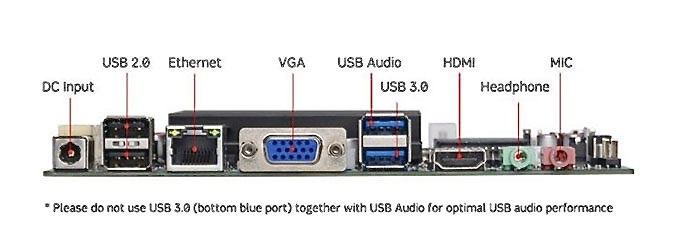
Nimitra2 inputs/outputs
Versions of the Nimitra Music Server
The Nimitra music server was originally released six years ago with a retail of $1395. Next came the Nimitra Signature at $1895, and now we have the Nimitra2 at $2,495. The Nimitra2, the second generation in the Signature series, was released last year. Fidelizer's reputation for low cost is beginning to get stretched a bit.
Owners of the original Nimitra can upgrade it to Signature level for $500 or to Nimitra2 level for $1100. The Nimitra Signature can be upgraded to Nimitra2 level for $600. There is also the Nimitra Classic version, which offers performance equal to the original Nimitra at a more affordable price ($995). The Classic can't be upgraded to Nimitra Signature or Nimitra2 level.
Versions of the Nikola LPS
The Nimitra2 and the EtherStream are supplied with wall-warts. Do yourself a favor and replace them immediately with a linear power supply. It's really important to have high quality power; you'll be rewarded with a taste of true audiophile sound. Fidelizer offers three levels of their Nikola LPS: the classic, MSRP $395; the Signature, $695; and the Nikola2, $849.
Nikola LPS interior
For a list of specs and features for the Nikola2 and Nimitra2, please visit this page on the website.
Conclusion: Making the Jump to Mid-fi
Fidelizer is an audiophile boutique based in Thailand that specializes in delivering the latest hi-tech developments in products priced for the average consumer. So it is with their EtherStream Network Switch, which offers tech found in expensive switches for a mere $399 (now updated to the EtherStream2 MSRP $449). The Nikola2 is the first LPS I found with a neutral, yet musical, voicing. And now the Nimitra2 Server completes the front-end. These products feature audiophile specs and parts, only they don't particularly sound like the lean and hyper-detailed stereotype. Rather, they are distinguished by their natural sound. What does this $3743 package sound like?
I've been using the MacBook Pro laptop for my music server, surrounded with Fidelizer ancillaries. This served me well for background listening, but it was not what I'd call quality sound. With the substitution of the Nimitra2 Server, the Fidelizer Optimized Solution was in place and I was almost taken aback by how much this modest front-end got right.
Music streaming vaulted up a class, landing solidly at an issue-free, "mid-fi" level. To make the sort of jump I'm describing, the package price of $3743 is darn cheap. It continually surprises me how much bang for the buck you get with these streaming front-ends. I can attest the Nikola2 LPS and EtherStream switch are highly competitive for their price. What about the Nimitra2? My experience with dedicated servers is limited to what I've heard at dealer demos and shows, but my sense is the Nimitra2 would be similarly hard to beat for its price. Yeah, there's better, but it will cost you.
Postscript
When I sent Mr. Punpeng a draft of my report, he made a convincing case that the Nimitra2's USB performance should be explored, as it might prove superior to ethernet: it depends on the setup. Using ethernet means the Nimitra2 handles the Roon core and the DAC handles the Roon endpoint. (That would be the ethernet plugin for my CH Precision C1 DAC.) With USB, the Nimitra2 handles both Roon core and endpoint.
After digging out a STEALTH USB-T SELECT (MSRP $1650/m), I started up Roon/Qobuz to burn-in this pathway. Obviously, lots of new variables were introduced here. Apart from the USB cable, the Nimitra2's Roon endpoint software and the CH DAC USB plugin needed burn-in.
And the verdict? After two days USB sounded fine—until I did an A/B. It wasn't even close. Maybe some more burn-in? Around four days, the difference narrowed slightly, especially after Mr. Punpeng used TeamViewer to try out some setting changes. He told me what he was doing and why, but it was alphabet soup to me. USB still sounds thinner. The Roon endpoint of the CH DAC is richer, more tonally dense and complex. We went through several more iterations trying other options with me giving feedback. And then? By golly, around six days the difference had been cut in half.
The moral of this story is each implementation can benefit from customization. You really need an expert to navigate the maze of software compatibilities in the server/DAC interface and a flexible design that allows manipulation with remote access. This service Mr. Punpeng provides his customers is of high value and unique, to my knowledge.
Nimitra2 Server
Retail: $2495
Nikola2 LPS
Retail: $849
EtherStream2 Network Switch
Retail: $449
Fidelizer




